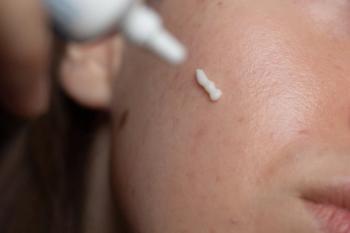
Top KOL Insights From SDPA Summer 2025
Key Takeaways
- Experts shared strategies for improving insurance authorization processes, emphasizing organization and patient communication to enhance treatment access.
- Diagnosing chronic hand eczema requires thorough patient history and examination to differentiate from similar conditions, guiding effective treatment.
Expert our review of the top pearls, clinical strategies, and practice-changing tips from leading voices in dermatology at SDPA’s 2025 Summer Conference.
To stay informed with the latest conference insights,
The 2025 Society of Dermatology Physician Associates (SDPA) Annual Summer Dermatology Conference brought experts and attendees together in the heart of Washington, DC. From June 26-29, the nation’s capital set the stage for dynamic discussions, clinical pearls, and hands-on learning aimed at elevating dermatologic care.
Voices in the field including Janelle Ball; Adam Friedman, MD, FAAD; Orit Markowitz, MD; Gina Mangin, MPAS, PA-C; Amy Spizuoco, DO, FAOCD; David Cotter, MD, PhD; Maria Hordinsky, MD; and Eileen Cheever, MPAS, PA-C; shared their insights on emerging therapies, complex case management, and evidence-based strategies for improving patient outcomes. Dive in for a comprehensive look at top pearls gleaned from clinicians at the meeting.
Janelle Ball
Janelle Ball, founder and CEO of BC Educators, shared practical strategies for improving insurance authorization processes in dermatology, emphasizing that disorganization is the biggest barrier to timely treatment access. She recommended assigning a dedicated, trained team member to manage authorizations, denials, and appeals from start to finish. Ball also stressed the importance of patient communication, encouraging practices to provide clear follow-up resources and leverage manufacturer support services to help patients navigate delays and stay engaged in their treatment plans.
Adam Friedman, MD, FAAD
Diagnosing chronic hand eczema (CHE) can be deceptively complex due to its overlap with conditions like psoriasis, allergic contact dermatitis, irritant contact dermatitis, and atopic dermatitis. According to Adam Friedman, MD, FAAD, the key to distinguishing CHE lies in a thorough patient history, focusing on recurrence patterns, occupational exposures, and triggers, as well as careful examination of lesion morphology and distribution. Psoriasis, for example, may present with nail changes or plaques in pressure areas, while eczema variants often involve the fingertips and appear less well-demarcated. Friedman stressed that accurate diagnosis is essential, as it guides effective treatment and helps alleviate the physical and emotional burden hand dermatitis can cause.
Orit Markowitz, MD
Orit Markowitz, MD, founder and CEO of OptiSkin Medical, introduced her intuitive “color wheel” approach to dermoscopy, a method designed to help clinicians quickly differentiate benign from malignant lesions without getting lost in granular pattern analysis. Rather than focusing solely on microscopic details, Markowitz encourages starting with a broader clinical view by assessing features like elevation, clinical and dermoscopic color, and overall appearance. This streamlined strategy helps reduce unnecessary biopsies and enhances diagnostic confidence, reserving deeper pattern analysis for ambiguous cases.
Gina Mangin, MPAS, PA-C
Gina Mangin, MPAS, PA-C, shared practical strategies for sustaining repigmentation in patients with vitiligo, cautioning against abruptly stopping treatment once pigment returns. Instead, she recommends a gradual tapering approach, such as reducing topical use from daily application to weekends only, to help prevent relapse by keeping memory T cells in check. This proactive, step-down method, Mangin noted, can lead to more durable results and greater patient confidence in long-term disease management.
Amy Spizuoco, DO, FAOCD
Amy Spizuoco, DO, FAOCD, highlighted the value of trichoscopy as a noninvasive, cost-effective tool that enhances diagnostic accuracy in patients with hair loss. By identifying distinct patterns in scarring and non-scarring alopecia, trichoscopy can often eliminate the need for biopsy and expedite treatment decisions. Spizuoco emphasized the importance of integrating trichoscopy early and routinely into clinical practice, noting its ability to reveal subtle diagnostic clues that might otherwise be missed, particularly in the early stages of disease when intervention can prevent permanent hair loss.
David Cotter, MD, PhD
David Cotter, MD, PhD, outlined a thoughtful, evidence-based approach to managing alopecia areata, spotlighting JAK inhibitors as powerful tools in targeting the immune-driven nature of the disease. He emphasized that T cells play a central role in disrupting the immune privilege of hair follicles, making the JAK/STAT pathway an ideal therapeutic target. Cotter noted that while limited cases tend to respond best, newer JAK inhibitors are helping to level the playing field for more treatment-resistant patterns like ophiasis and alopecia universalis. With several FDA-approved and investigational options now available, Cotter recommended tailoring therapy based on disease severity, comorbidities, and access.
Maria Hordinsky, MD
Maria Hordinsky, MD, shared a key clinical pearl for managing scarring alopecia: If a patient isn’t improving despite guideline-based treatment, clinicians should consider allergic contact dermatitis as an overlooked contributor. She cautioned that patients may react to ingredients in topical medications or injection preparations, potentially hindering progress. Patch testing, she noted, can uncover hidden allergens and guide more effective care. Hordinsky also highlighted the growing momentum in hair loss research, particularly for scarring alopecias, but stressed the urgent need for more standardized clinical trials to validate treatment efficacy.
Eileen Cheever, MPAS, PA-C
Eileen Cheever, MPAS, PA-C, provided an overview of the growing role of JAK inhibitors in dermatology, emphasizing their current FDA-approved uses and emerging investigational applications. She reviewed the JAK/STAT pathway’s underlying mechanism and highlighted promising data on ruxolitinib cream for prurigo nodularis, including rapid itch reduction and improved quality of life. Cheever also spotlighted the BRAVE-AA-PEDS trial, which showed encouraging efficacy and safety of baricitinib in adolescents with severe alopecia areata.
Make sure to keep up to date with the latest in coverage from the conference and subscribe to Dermatology Times to receive daily email updates .
Newsletter
Like what you’re reading? Subscribe to Dermatology Times for weekly updates on therapies, innovations, and real-world practice tips.


















